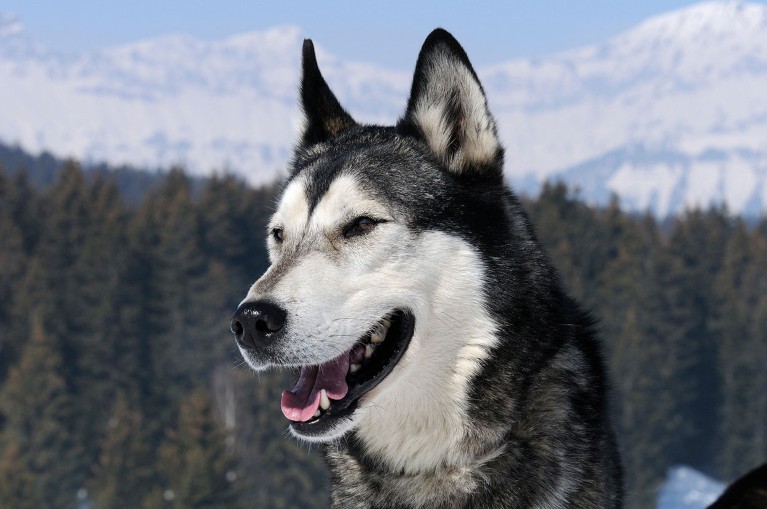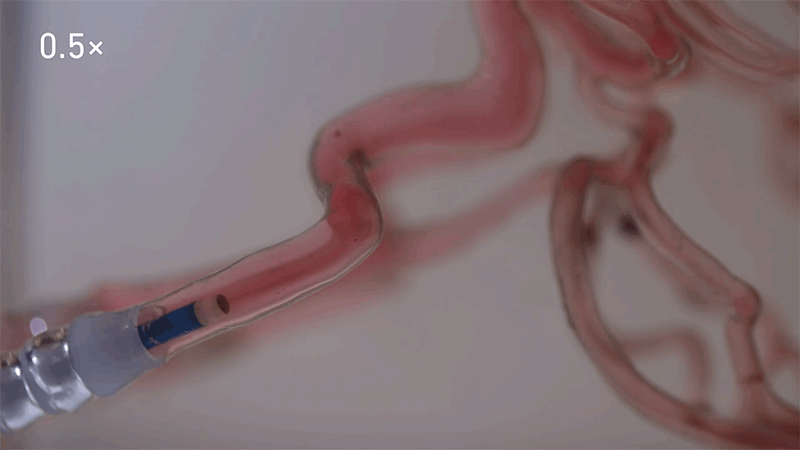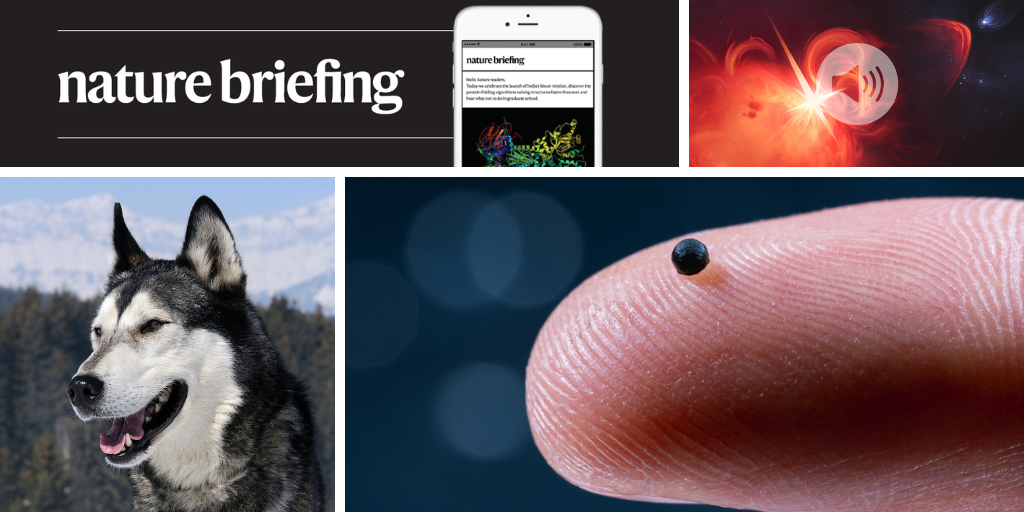You have full access to this article via your institution.
Hello Nature readers, would you like to get this Briefing in your inbox free every day? Sign up here.

Modern huskies have ancestral connections to early Arctic dogs.Credit: ventdusud/Panther Media Global via Alamy
The diversity of modern-day dog breeds might have emerged thousands of years ago. An analysis of ancient skulls reveals a distinctive dog skull shape — a shortened snout and widened face, compared to wolves — first seen in nearly 11,000-year-old fossils. Not long after, researchers say, there was a boom in the variety of dog skull shapes and sizes, capturing more than half of the diversity in today’s breeds. An analysis of the genomes of ancient dogs also suggests that ancient humans valued distinctive features, took their canine companions with them when they moved around and traded dogs with useful characteristics.
Reference: Science paper 1 and paper 2
A remote-controlled ‘robot’ the size of a grain of sand can swim through blood vessels to deliver drugs before dissolving into the body. The system uses tiny gelatine beads filled with a drug and nanoparticles of iron oxide, which allows its movement to be guided with a magnetic field. The ‘microrobots’, which have been tested in pigs and sheep, could allow doctors to deliver small doses of drugs to specific sites with less risk of toxic off-target effects.

Credit: ETH Zürich
Features & opinion
A line cook takes comfort food very seriously in Hotcakes at the end times and an unwilling babysitter finally gets the recognition he deserves in Spaceport mementos.
Nature | 6 min read & Nature | 6 min read
Andrew Robinson’s pick of the top five science books to read this week includes an itemized study of ‘technofossils’ — the remnants of modern civilization — and an illustrated guide to the subtleties of typography.
Researchers have detected what they say is the strongest evidence yet of a coronal mass ejection (CME) — a huge expulsion of magnetized plasma — coming from a star other than our Sun. This changes everything for the study of CMEs, astronomer and study co-author David Konijn tells the Nature Podcast. While previous assumptions had to rely on the star we know best, “now we actually have this stellar data point”, he says. Next, “we’re going to search through this entire data set very deliberately, very carefully to maybe find some more dimmer bursts”, says Konijn.
Nature Podcast | 27 min listen
Subscribe to the Nature Podcast on Apple Podcasts, Spotify or YouTube Music, or use the RSS feed.
In today’s penguin-search puzzle, Leif Penguinson is enjoying the tamarind forest in the Plaine des Tamarins, Réunion Island. Can you find the penguin?
The answer will be in Monday’s e-mail, all thanks to Briefing photo editor and penguin wrangler Tom Houghton.
This newsletter is always evolving — tell us what you think! Please send your feedback to [email protected].
Thanks for reading,
Flora Graham, senior editor, Nature Briefing
With contributions by Jacob Smith
• Nature Briefing: Careers — insights, advice and award-winning journalism to help you optimize your working life
• Nature Briefing: Microbiology — the most abundant living entities on our planet — microorganisms — and the role they play in health, the environment and food systems
• Nature Briefing: Anthropocene — climate change, biodiversity, sustainability and geoengineering
• Nature Briefing: AI & Robotics — 100% written by humans, of course
• Nature Briefing: Cancer — a weekly newsletter written with cancer researchers in mind
• Nature Briefing: Translational Research — covers biotechnology, drug discovery and pharma


